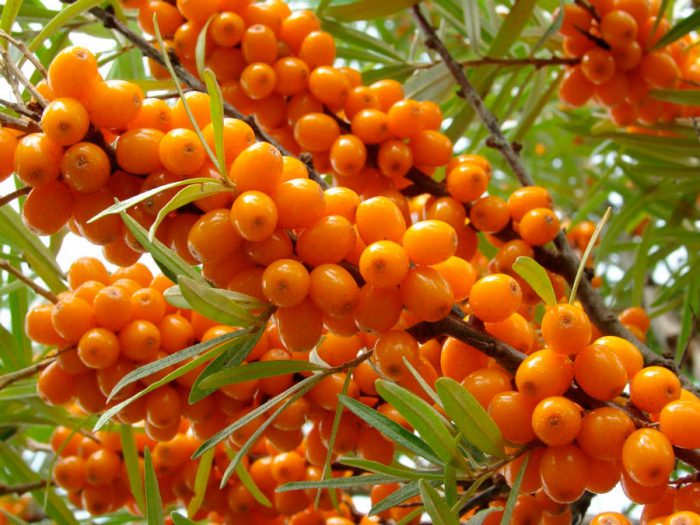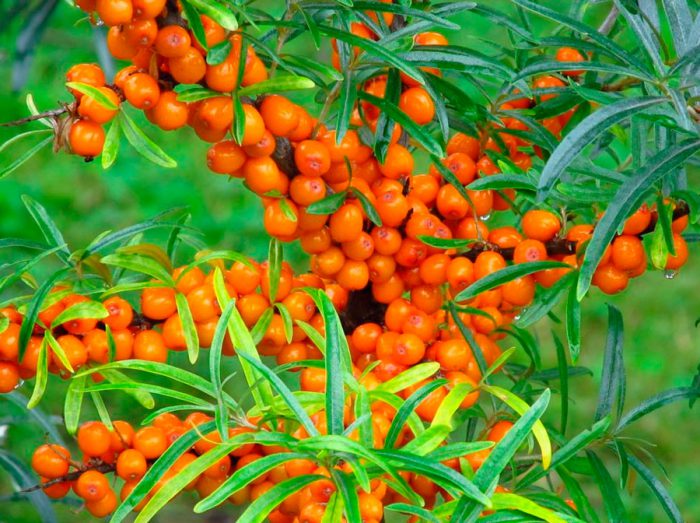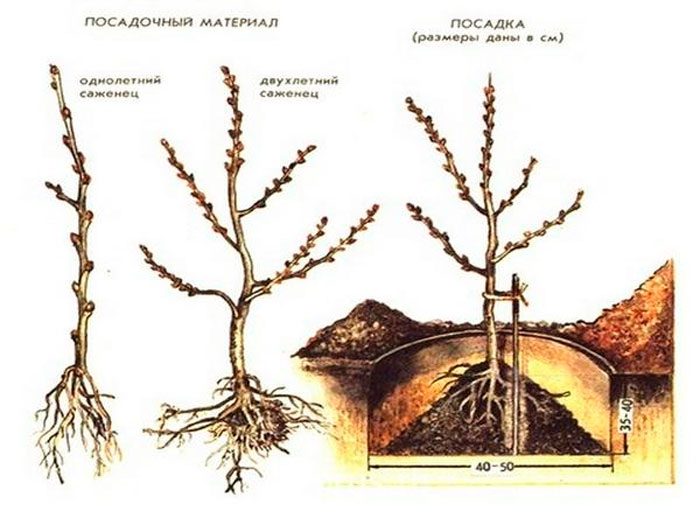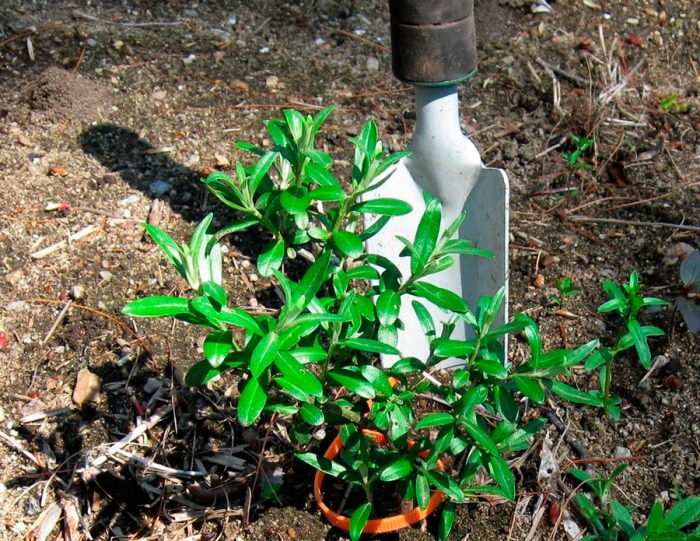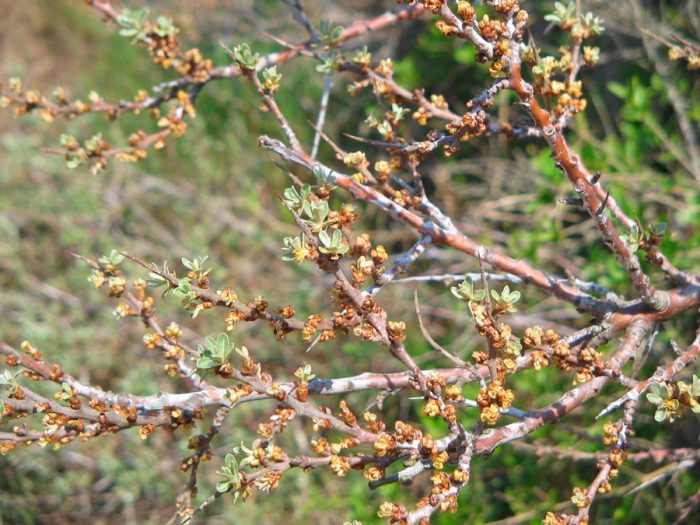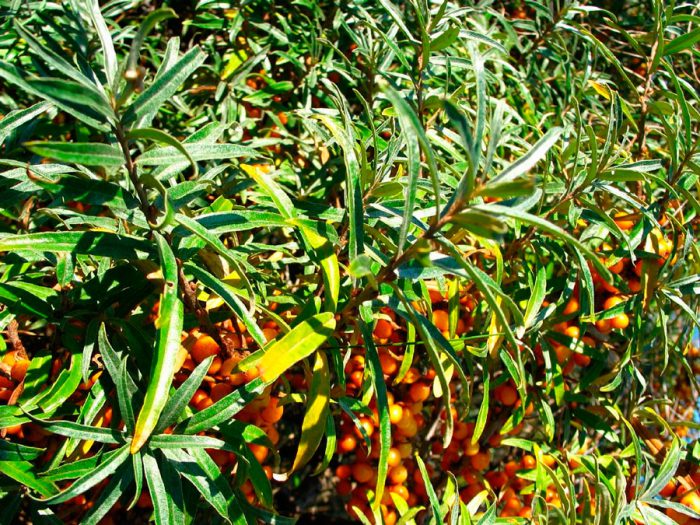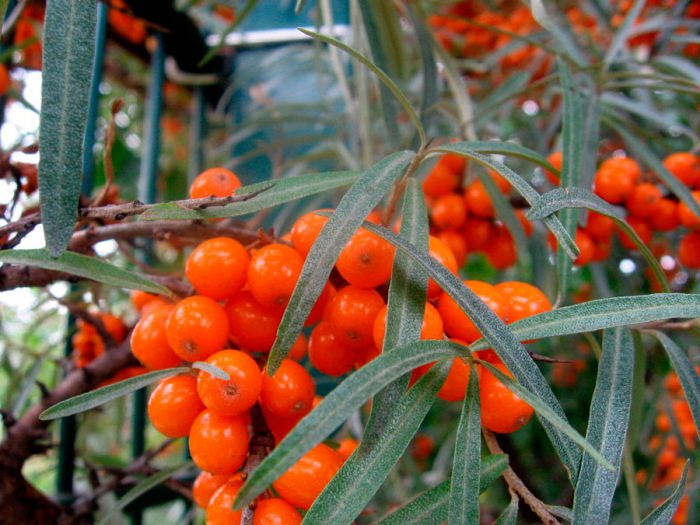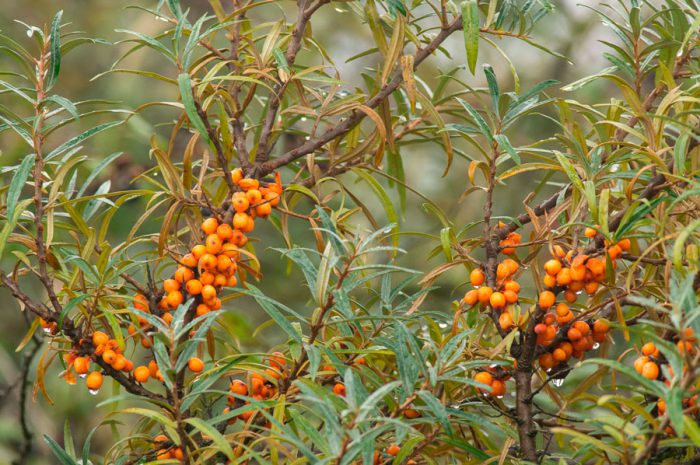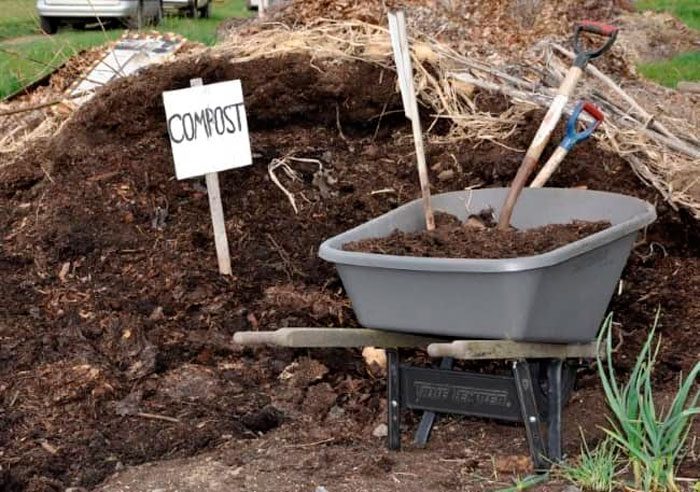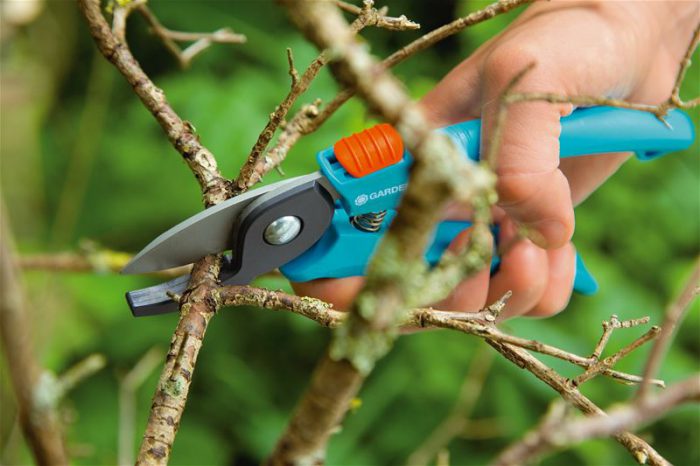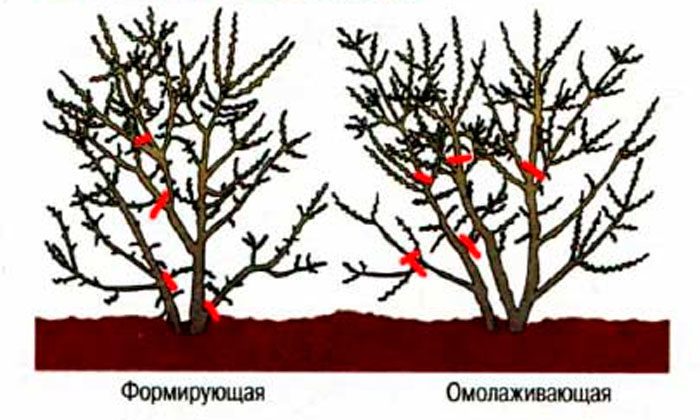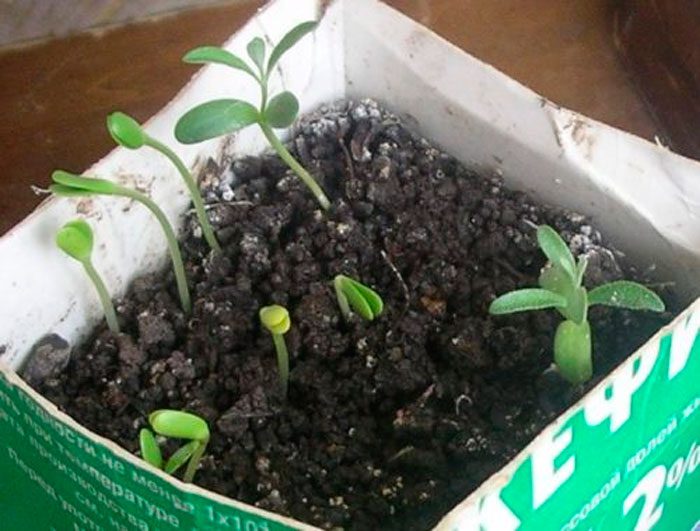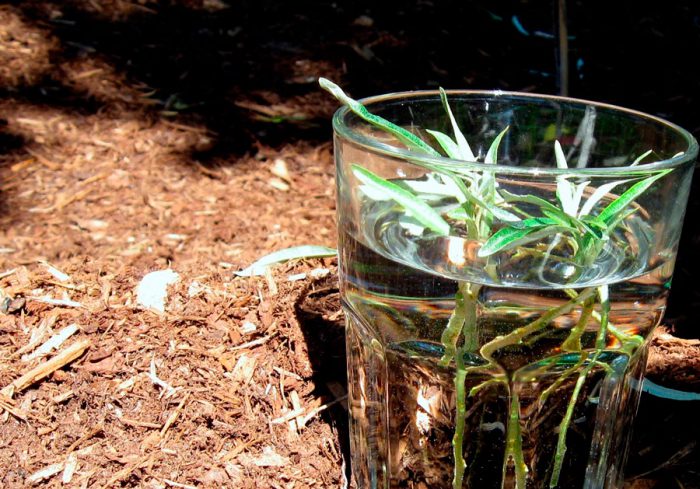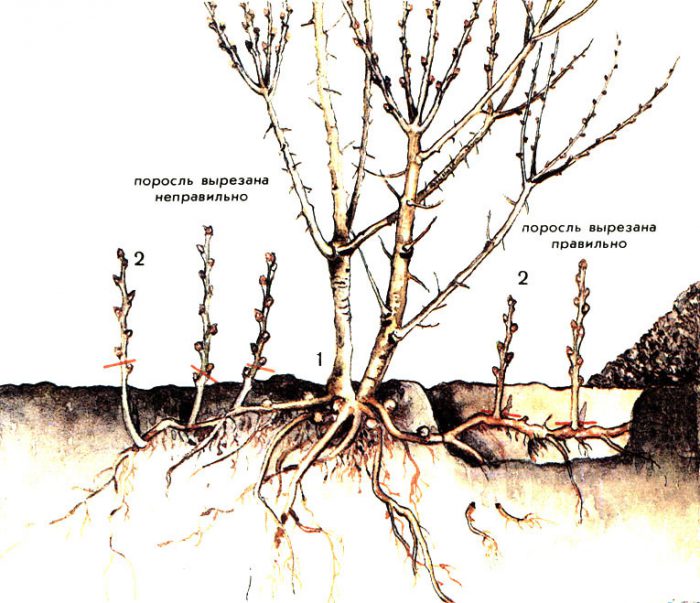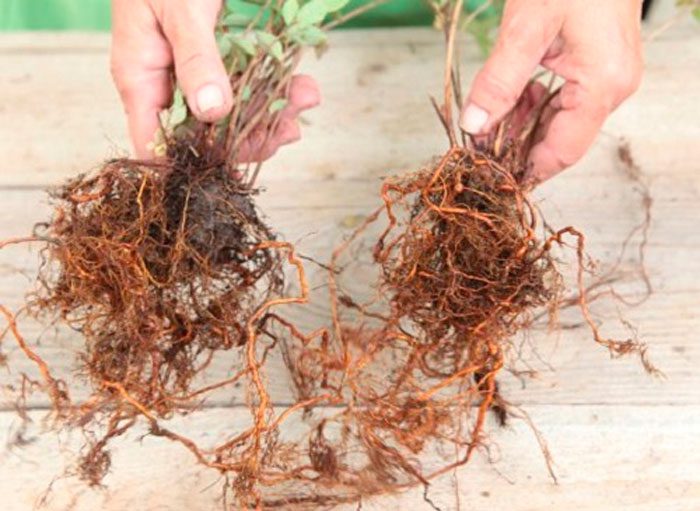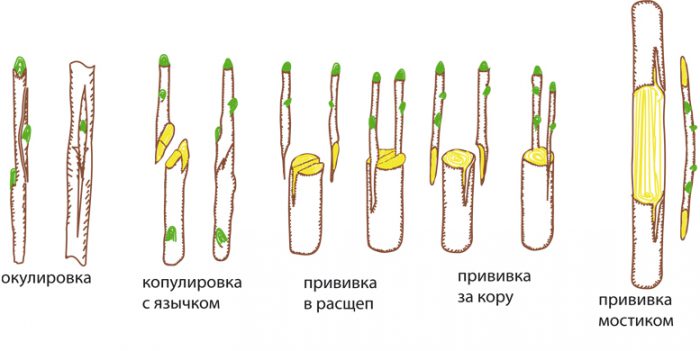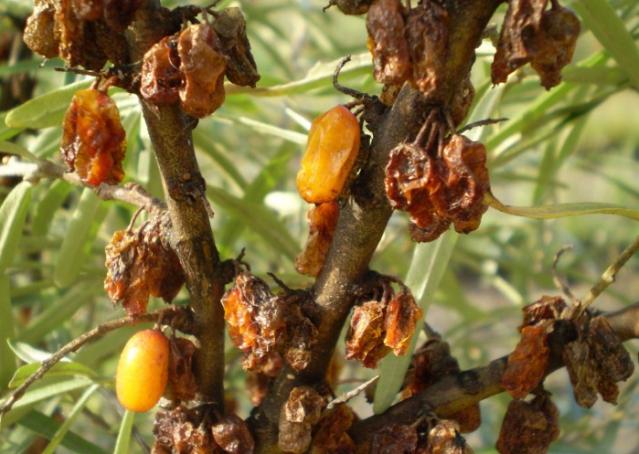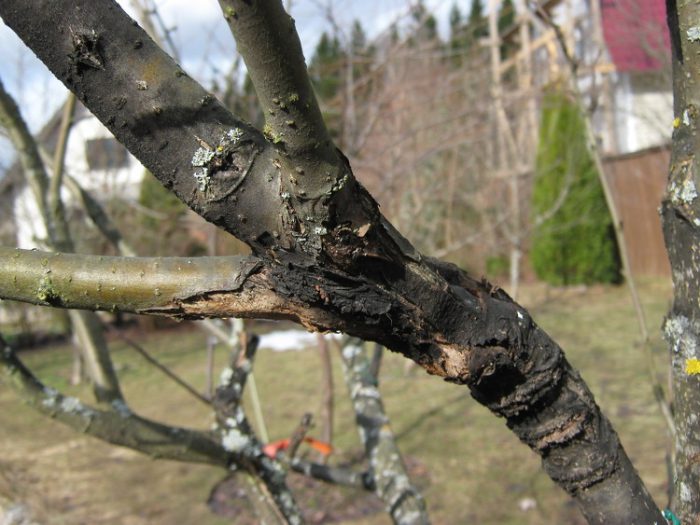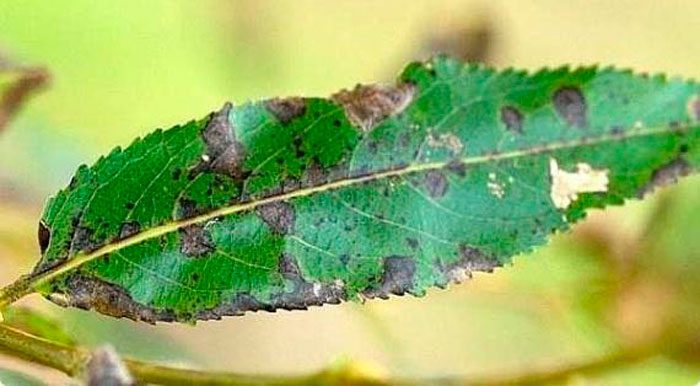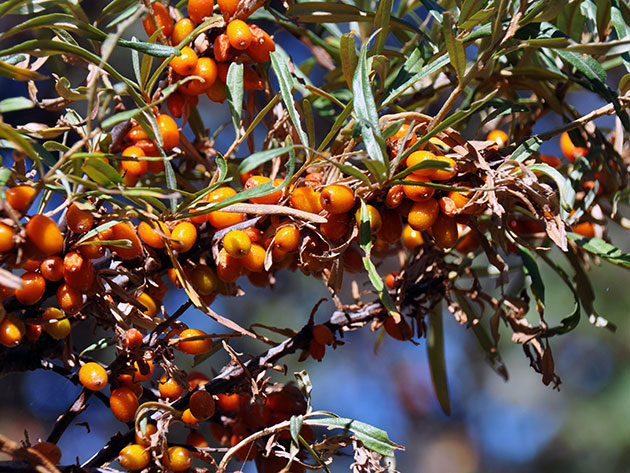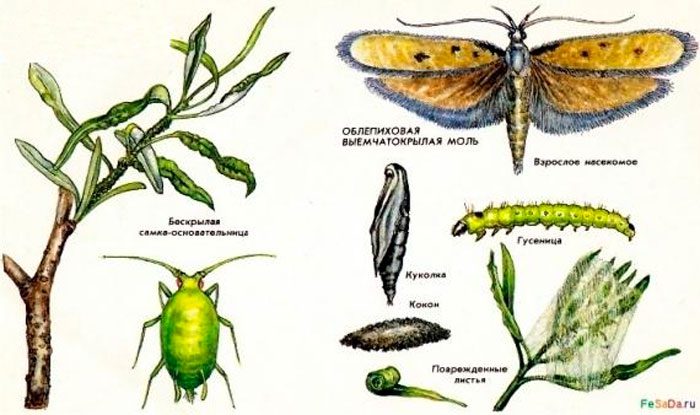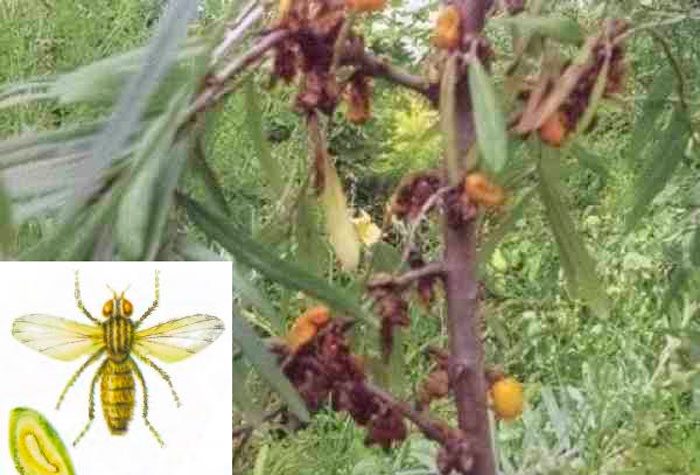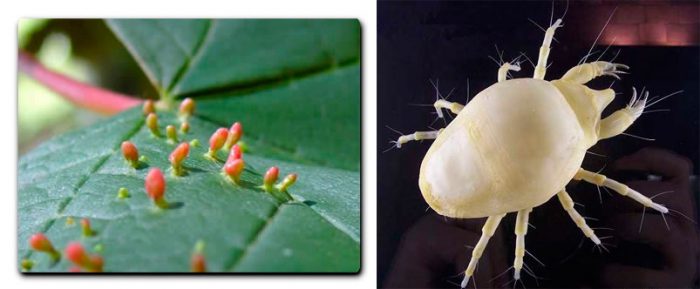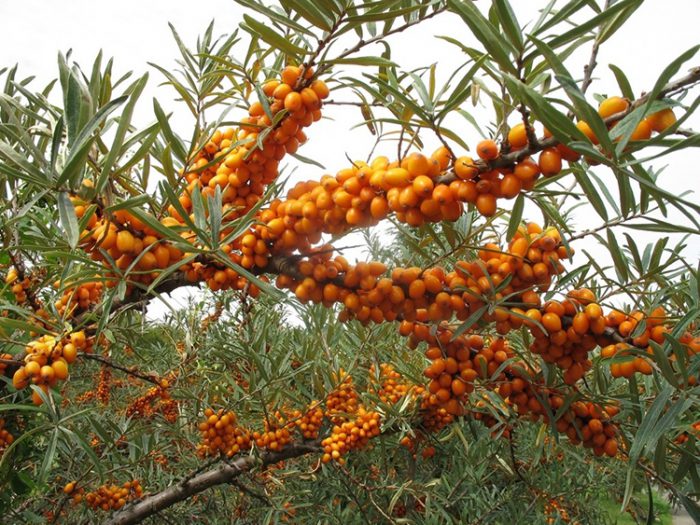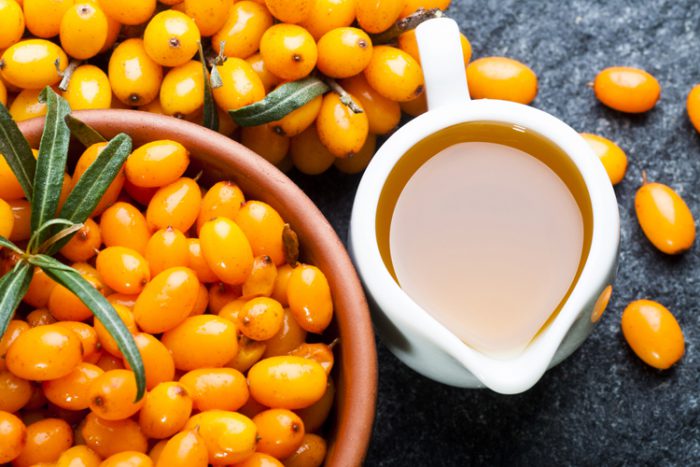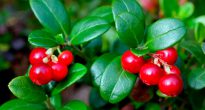The sea buckthorn plant (Hippophae) is a member of the loch family. It prefers to grow on river and lake shores on pebbles or sand. This plant can be found in the mountains at an altitude of 2100 m above sea level. Sea buckthorn was used in alternative medicine in ancient Greece, it was treated with horses, as well as people. Gradually, they began to forget about its beneficial properties, but recently this plant has again become quite popular. The scientific name of this plant, translated from Greek, means "shine for horses", because those animals that ate the foliage of the sea buckthorn had a satin tint on their skins. On the territory of Russia, such a culture began to be grown in the 19th century, but the appearance of the first varietal plants occurred only in the thirties of the 20th century.
Content
Features of sea buckthorn
Sea buckthorn is not a very large tree or shrub, the height of which can vary from 0.1 to 6 meters or even more. The root system of such a culture is superficial, the depth of its location in the soil is about 0.4 m. However, it grows very wide in width, since the crown diameter is 2–2.5 times less than the diameter of the root system. Alternately located narrow long leaf plates have a green speckled front surface and a golden-reddish or whitish-silver purl, as it is covered with stellate scales. Unisexual flowers are small and have no decorative value. Their opening is observed almost at the same time with the leaf plates. Such a culture blooms in the last days of April or the first of May.Sea buckthorn is a dioecious plant: spike-shaped short inflorescences are located at the bases of young shoots, and they consist of male flowers of a brown-silver color, while in the axils of the covering scales there are 1 or more female flowers of a pale yellow color. The fruit is a false elongated or spherical drupe, it includes a nutlet, as well as an overgrown receptacle of a pale red or orange color. Fruit ripening lasts from 90 to 100 days. The branch of this plant seems to be covered with fruits, this influenced the formation of the name of this plant in Russia.
The fruits are used to make juice, as well as preserves, and they also extract oil with medicinal properties. This plant has a very high frost resistance, it is not afraid of frosts down to minus 50 degrees, while the root system in the soil is able to withstand a drop in air temperature to minus 20 degrees. However, winter thaws can cause harm to sea buckthorn, because in non-frozen soil, its root system can rot.
If you plant only 1 sea buckthorn bush, then it is unlikely to bear fruit. The fact is that most often male and female flowers are located on different copies. But still, forms with bisexual flowers are extremely rare. As a rule, the formation of fruits occurs on female specimens, while males are necessary for pollination. For pollination of 3-5 female bushes, just one male plant is enough. You can understand a male or female bush growing in your garden only when flower buds appear on it. On female plants, the buds are smaller and smaller than on the male. Sea buckthorn will begin to bear fruit for 4–6 years from the beginning of growth.
Today, sea buckthorn is gaining more and more popularity among gardeners. Despite the fact that this culture is not yet as popular as, for example, raspberries, gooseberries, grapes, strawberries or currants, it can be seen in the gardens much more often than strawberries, blueberries, actinidia, irgu, blackberries or blueberries. The berries of this plant are not only tasty, but also very useful. Below we will talk about sea buckthorn buckthorn, it is found in almost all of Europe, and it is also cultivated by Russian gardeners.
Planting sea buckthorn in open soil
What time to plant
As a rule, sea buckthorn is planted in open soil at the beginning of the spring, before the buds open. Such a plant tolerates an autumn planting extremely poorly. It is recommended to plant sea buckthorn in a well-lit area located on the periphery of the garden area. The fact is that in a similar area, you can safely place 3 or 4 female and 1 male plant. If the soil is clay or acidic, then it is not suitable for planting such a culture. This plant will grow best in soil that has a pH between 6.5 and 7.0. If the soil is acidic, then liming is carried out before planting the sea buckthorn, for this, lime tuff or ground limestone is introduced into it for digging, while 250 to 400 grams of substance are taken per 1 square meter. This volume of the deoxidizer should be enough for 8-10 years. The depth of the groundwater must be at least 200 cm. The site where strawberries were previously grown is not recommended for planting sea buckthorn, since these crops have the same diseases.
Planting sea buckthorn in spring
Experienced gardeners recommend buying one- or two-year-old seedlings. Immediately before planting in open soil, the root system of the plant should be dipped in a clay mash. In the event that the plant's root system has dried up quite strongly, it must first be placed in a container with water for 1-2 days, in which case it will again become elastic.
The preparation of the site for planting is carried out in the autumn.To do this, you need to dig up the soil to the depth of a shovel bayonet, while 200 grams of superphosphate, 20 grams of potassium sulfate and from 4 to 5 buckets of humus per 1 square meter are introduced into it. The hole itself should be dug in the spring, its size should be 0.65x0.65x0.65 m, the distance between the plants should be 200 cm. A wooden stake should be installed in the center of the bottom of the hole, the height of which should be 100-120 centimeters. Then, nutritious soil is poured into the bottom of the pit, and a seedling is placed on top of it. After all the roots are straightened, the pit should be filled with soil, which is pre-mixed with humus, coarse sand or peat in a 1: 1 ratio. Make sure that the root collar of the seedling is not buried in the soil more than 30 mm. Around the seedling, it is necessary to make a not very large circular hole into which water is poured during watering. After the sea buckthorn is tied to a peg, it needs to be watered with 20-30 liters of water. After the liquid is absorbed into the hole, it should be covered with a layer of mulch (dry soil or humus) so that it is leveled with the soil surface. In order for the plant to take root quickly and well enough, its first 30 days must be watered daily.
Planting sea buckthorn in autumn
Experienced gardeners do not recommend planting sea buckthorn in open soil in the fall. However, if this is simply necessary, then this procedure should be carried out before the second half of October, otherwise it will not have time to take root in a new place until the first frost. It should also be borne in mind that an autumn planting will make sense only if the autumn is quite long in the region, and the seedling meets all the requests, namely:
- the presence of three skeletal roots, reaching about 20 centimeters in length, and the presence of many fibrous roots;
- the stem height should be 0.35–0.5 m, and its diameter should be at least 60 mm;
- there should be several shoots on the stem.
Pay attention to the bark, if the seedling is healthy, then it will be elastic without wrinkles and injuries. The bark should adhere tightly to the wood, which should not be brownish in color. The fact is that the wood becomes brown only in seedlings damaged by frost.
Prepare the pit as described above. A peg is installed in the center of its bottom and soil is poured into a mound, taken from under an adult sea buckthorn bush, which must first be combined with a handful of double superphosphate, 1 bucket of humus and 1 tbsp. wood ash. Further planting is carried out in the same way as in the spring.
Sea buckthorn care
Sea buckthorn care in spring
Caring for sea buckthorn in the garden is not at all difficult, but you need to know some of the nuances. In the last days of March, after it becomes warm enough outside, sanitary pruning of the bush should be done, for this you need to cut out all dried, injured, disease-damaged and drooping branches. In April, the surface of the trunk circle and the soil between the rows should be loosened or buried.
In May, this plant needs to be watered, especially if the winter period was little snow, and the spring turned out to be dry. However, if there was a relatively large amount of snow in winter, and it rained in spring, then it will be possible to water the plant later.
In the event that during the flowering period there will be calm, windless weather, then sea buckthorn will need additional pollination. To do this, cut off a branch from the male bush, which is shaken over the shoots of the female specimen.
Sea buckthorn care in summer
In the summer, there is an active growth of sea buckthorn berries and stems. At this time, special attention should be paid to watering the bush, make sure that the surface of the trunk circle does not dry out. But watering should be moderate. This crop reacts extremely negatively to both excessive drought and stagnant water in the ground.So, if the soil is waterlogged, then the air flow to the roots will worsen, which will negatively affect their life. Monitor the water balance of the soil, and 24 hours after watering, you need to loosen the surface of the trunk circle and the soil between the rows. It is necessary to weed and cut out root shoots in a timely manner. Examine the plant regularly for signs of various diseases.
The ripening of berries begins in August or September. Branches that are overloaded with fruits can break, so they need support. They begin to harvest after the color and size of the berries are the same as those characteristic of the variety.
Sea buckthorn care in autumn
When all the fruits are collected, you need to make a sanitary pruning of the bush. The rejuvenation of adult bushes is carried out in the autumn, while only one plant is subjected to this procedure every year. If dry weather is observed in autumn, then sea buckthorn in late autumn will need abundant watering. Even in the autumn, the plant needs to be fed, for this it is necessary to add organic matter and phosphorus fertilizers to the soil. Fertilizers must be applied for digging the soil on the site to a depth of about 10 centimeters.
Sea buckthorn processing
All experienced gardeners know that it is better to regularly carry out preventive treatments of a plant than to cure it for a long time for various diseases or pests. At the very beginning of the spring period, the area where sea buckthorn grows must be freed from last year's foliage, and the plant - from the remnants of berries and flowers. The wounds on the branches and trunks are cleaned, and then they must be treated with a solution of copper sulfate (3%). To protect the bark of the plant from the pest, the skeletal branches and the stem are whitewashed with lime. To protect sea buckthorn from fungal diseases and pests, many gardeners resort to the following procedure: the bush 2 times during the season (in early spring and late autumn) is treated with a solution of Bordeaux mixture (1%) or urea (7%). If pests are noticed on the plant, then it will need to be sprayed with a solution of wood ash once a week.
Watering sea buckthorn
Watering the plant is necessary only if necessary, while it is necessary that after watering the entire root layer of soil is well wet. For this, from 30 to 40 liters of water is poured into the near-trunk circle of a young specimen, and from 60 to 80 liters of water for an adult plant. By the end of the summer period, the water consumption per bush should be increased by 1.5 times. To increase the plant's resistance to frost, it is imperative to carry out water-charging podzimny watering.
If it rains or the plant is watered, it is imperative to loosen the soil surface. The roots of this plant need air, since nodules grow on them, where bacteria live, which assimilate nitrogen from the air and enrich the root layer of soil with nitrogenous compounds. These compounds are required by this plant for normal growth. Since the root system of such a plant is horizontal and shallow, with frequent loosening, the risk of injury increases. To significantly reduce the number of weeding, loosening and watering, it is necessary to cover the surface of the trunk circle with mulch (humus or compost from birch or apple leaves or potato tops).
Fertilizing sea buckthorn
You should start feeding sea buckthorn from the third year of growth. The root system of an adult bush can provide itself with nitrogen itself, therefore, such a plant needs to be fed only with phosphorus and potassium, while fertilizers must be applied to the soil. However, until the age of five, in spring, ammonium nitrate (20 grams per 1 square meter) should be distributed along the near-stem circle of the plant, then the fertilizer should be covered with a layer of soil.
A plant that begins to bear fruit immediately after it fades out, it is necessary to arrange foliar feeding with a solution of Effekton or liquid potassium humate (1 large spoon for 1 bucket of water). Such feeding is repeated 20 days after the first one. During the formation of ovaries for feeding sea buckthorn, the following nutrient mixture is used: for 1 bucket of water, 2 large spoons of the Universal-micro nutrient mixture and double superphosphate (in granules), as well as 1 large spoon of potassium sulfate are taken.
In the fall, during the digging of the site, fertilizers should be applied to the soil: 100 grams of wood ash, 30 grams of superphosphate and 25 grams of potassium salt per 1 square meter of the site. If the soil is acidic, then superphosphate must be replaced with phosphate rock (50 grams per 1 square meter).
Sea buckthorn pruning
What time to trim
Sea buckthorn pruning can be done in spring, summer and autumn. However, this procedure is often carried out in early spring, while it is still cool outside, and the plant is dormant. In the autumn, preparing the plant for the coming winter, they arrange sanitary pruning for it.
Pruning sea buckthorn in spring
In spring, sanitary pruning is carried out; for this, all dried, injured and diseased branches and stems are removed. Young plants need formative pruning, and the gardener must choose how he will form the plant: a bush or a tree. To form a shrub, a newly planted seedling must be cut to a height of 10 to 20 centimeters. Shoots should appear on the stump, and it will also grow from the root, next year you will need to choose the 4 most powerful shoots from them, and cut the remaining ones. It should be borne in mind that root shoots should be left only in self-rooted plants.
The sea buckthorn tree should have a stem 0.3 m high and from 2 to 4 skeletal branches. If the sapling has already fully formed branches, then it does not need to be pruned. However, if there are no branches on these branches, then the seedling should be shortened to 0.3 m, in the next season 3 or 4 skeletal branches will have to be formed from the grown shoots, as well as a conductor, then they are cut at the same height. In the event that in the next season the branches begin to grow excessively actively, they must be shortened by 1/3 or ¼ of the length. After the plant begins to bear fruit, you need to stop cutting off the tops of the shoots, because flower buds will form on them.
When the shrub or tree is fully formed, it remains only to regularly cut out unnecessary stems that grow in the wrong direction and contribute to thickening, as well as shoots. The root shoots are cut out as follows: the shoot is dug up and carefully cut into a ring in the place where it sprouted, while trying not to injure the roots of the plant.
When the sea buckthorn reaches the age of six, it will need anti-aging pruning, it is recommended to do it in the same way in the spring. Branches that have stopped bearing fruit must be removed and replaced with younger and stronger branches (even top branches can be used). No more than 1-3 branches should be replaced each year.
If the plant is very badly damaged by frost or dies altogether, then you need to check the condition of the root system. If the root is alive, then the plant must be cut down to the root collar and then proceed to the formation of a new shrub or tree.
Pruning sea buckthorn in autumn
In late autumn, when the dormant period begins for the plant, it is necessary to carry out sanitary pruning; for this, all old, excess, injured, improperly growing, dried out and diseased stems and branches are cut out. Cutting sea buckthorn is necessary only with a very sharp instrument, which must be disinfected, since the wound and bark during cutting should not be soaked.
Reproduction of sea buckthorn
There are several different methods for propagation of sea buckthorn: by seeds, cuttings, grafting, shoots, dividing the bush and layering. Reproduction of this culture will not give you much trouble, no matter which method you choose.
How to grow from seeds
If you need a varietal seedling, then you should choose vegetative propagation methods, because the plant obtained from the seed is not able to maintain the varietal characteristics of the mother bush. As a rule, breeders are engaged in the cultivation of seedlings from seeds, and they are also used as a rootstock for grafting sea buckthorn.
The seeds remain viable for 2 years or even longer. Seeds must be stratified before sowing; for this, they are removed in the refrigerator on a vegetable shelf for 6 weeks. Sowing is carried out in the last days of April; it is not necessary to deepen the seeds very much. The container is covered with glass and placed in a well-lit and warm place. The first seedlings should appear after 7-15 days, at first they should be protected from direct sunlight. Seedlings are transplanted to a permanent place in mid-June, while the long taproot must be shortened to stimulate the growth of the root system.
Reproduction of sea buckthorn by cuttings
Sea buckthorn is propagated by lignified and green cuttings. The harvesting of lignified cuttings is carried out in the last days of November or the first days of December, it can also be done in late March or early April. At the same time, gardeners recommend harvesting cuttings in the spring. You need to use two-year increments, the thickness of which should be at least 60 mm. The length of the cuttings varies from 15 to 20 centimeters. Cuttings harvested in autumn must be tied into a bundle, which is wrapped in a cloth and placed in a polyethylene bag. Then the cuttings must be laid in a hole and covered with soil, a thick layer of snow, dried foliage or spruce branches is put on top.
In spring, the harvested cuttings before planting in open soil should be placed in a container with water for 3 days, which must be changed regularly. If desired, you can mix in the water with an agent that stimulates the growth of roots. Then the cuttings are planted in the soil at an angle, while at least 2 or 3 buds should rise above its surface, but most of them should be in the soil. In early autumn, the height of the cutting can be 0.6 m. Fruiting in such a plant begins already in the third year of growth.
Rooting of green cuttings is not as easy as woody cuttings. To do this, you will need to create special conditions, for example: you will need a loose sterile soil mixture, which is covered with a layer of washed sand on top, you will need drugs that stimulate root growth, you also need to systematically spray water to increase air humidity, and so on.
Reproduction of sea buckthorn by layering
For reproduction by layering, you will need a young shrub or tree, the branches of which bend very well. In springtime, you need to choose a branch with a good growth, it is bent over and laid in a not very deep groove prepared in advance. After the branch is fixed, the groove should be covered with soil. Throughout the season, the layering must be provided with systematic watering, top dressing, weeding and loosening of the soil surface. The cuttings should take root completely next spring, at which time they should be dug up, cut off from the parent bush and transplanted to a permanent place.
Reproduction of sea buckthorn by shoots
In this way, only a self-rooted plant can be propagated. For this, shoots are chosen that grow away from the parent plant (from 150 cm and further). As a rule, in such processes, the root system is already formed. Throughout the season, this shoot needs to be hilled high, and it is also provided with regular feeding and watering.In springtime, it is carefully cut off from the mother bush and planted in a new place.
Reproduction of sea buckthorn by dividing the bush
First, you should dig up the sea buckthorn bush and cut off all the old branches. Then, with the help of a secateurs, it is divided into several parts, while it should be borne in mind that each division must have developed roots and stems. Places of cuts must be sprinkled with crushed charcoal. Then parts of the bush must be planted in wells prepared in advance, and then they should be looked after in the same way as seedlings.
Reproduction of sea buckthorn by grafting
This breeding method is the most difficult and laborious. This breeding method is used, as a rule, in order to graft a male stalk to a female bush, which will allow not to plant a new specimen. It is also used to grow a varietal plant on a viable rootstock.
Vaccination is recommended in the last days of April or the first days of May. A two-year-old sea buckthorn seedling grown from seed is used as a stock. Its stem must be cut back to growth 15–20 mm above the root collar, while only 1 most powerful shoot 10 centimeters high should be left on the rootstock, the rest must be broken off or cut out. The shoot that remains must be grown during the summer period, making regular pinching so that it becomes thicker and at the same time does not grow in height. All growths must be removed from the lower part of the shoot (up to 13-15 centimeters in height). Before the onset of the next spring period, the shoot should become an even and smooth stem. By the onset of the third spring, the height of the plant should reach 0.5–0.6 m, while its diameter will be 0.5–0.9 cm. At this time, improved copulation of cuttings of the required variety to this stock is performed at a height of 8–10 centimeters from the root collar. Cuttings take root to an artificially created stem, compared to grafting to the root collar. It was noticed that cuttings cut from male specimens take root somewhat worse than from female ones.
Diseases of sea buckthorn
Previously, gardeners believed that sea buckthorn has a very high resistance to disease and therefore practically does not get sick. But when this culture gained popularity, it turned out that this plant, like most of the fruit trees, can get sick with viral, fungal and bacterial diseases. The following diseases will be described with which sea buckthorn is most often affected.
Endomycosis
Endomycosis is a focal fungal disease. It manifests itself in the first days of August, while the berries are affected, they become soft, flabby and a gray, odorless mucus appears in them. Over time, the shell of such fruits breaks, while the mucus flows out and gets on the nearby berries, as a result of which they become infected. Dew and rainy weather contribute to the fact that endomycosis begins to develop very quickly. The affected bush must be sprayed twice with copper oxychloride or Bordeaux mixture (1%). The first time the sea buckthorn is sprayed when it has just faded, and the second - in mid-July.
Black cancer
If dark spots of a round shape appear on the surface of large branches, this means that the bush is affected by black cancer. Over time, the bark located in these spots turns black, cracks and falls off, while the color of the wood acquires a dark shade, and it itself rotts. Most often, pathogens penetrate into the wounds remaining after trimming or through the places of frostbite. It is necessary to remove diseased wood and bark from the affected areas of the plant, cleaning them to healthy tissue. Then this place is treated with copper sulfate, and then with a mixture of mullein and clay.
Blackleg
Sea buckthorn seedlings can become infected with black leg, which is caused by soil fungi.In the affected seedling, thinning of the shoot is observed at the point of contact of the hypocotal knee with the ground. This disease affects only very young seedlings. For prophylaxis purposes, it is recommended to use washed sand combined with sod soil for growing seedlings. It is also recommended to water the seedlings once every few days, using a solution of potassium manganese of light pink color for this. Affected plants need daily treatment with a solution of potassium permanganate.
Stegmina (scab)
This fungal disease affects young leaf plates, stems and berries. Often it causes the stems to dry out, and sometimes the entire bush. In the middle of the summer period, glossy round spots of black color appear on the fruits, which gradually become larger. After that, in the gaps that appear on the berries, mucous formations of yellow or pink appear. The berries turn black and dry out. Black swellings appear on the surface of the stems of the current season, and velvety ulcers and specks of black color appear on the leaf plates. If you look at an infected plant, it may appear that it is splattered with black ink. For preventive purposes, it is necessary to carry out sanitary pruning every time in autumn, while plant residues must be destroyed. Then the bush is sprayed with a solution of Bordeaux mixture (1%), but it should be noted that this must be done no later than 3 weeks before harvesting.
Gray and brown rot
In July, in wet rainy weather, brown or gray rot can develop on sea buckthorn. If the bush is infected with brown rot, then specks of a dark color are formed on the fruits, and if it is gray, wrinkling and wilting of the berries is observed. Affected plants must be cut and destroyed. In order to prevent sea buckthorn, it is necessary to properly water, feed, and also loosen the soil surface in a timely manner.
Also, this culture can be affected by fusarium, verticillosis, alternariosis, phomosis, sea buckthorn terry, annular necrosis of branches and corineum necrosis, mixed and heart-shaped rot of the trunk. However, if you adhere to the rules of agricultural technology of such a plant, then it may not get sick at all.
Sea buckthorn pests
Below will be described those pests that most often settle on sea buckthorn and pose a serious danger to it.
Sea buckthorn moth
Caterpillars of the sea buckthorn moth, during the period of bud swelling, penetrate them and gnaw them from the inside. To destroy such a pest, it is necessary to spray the bush with a solution of Karbofos during the swelling of the buds.
Sea buckthorn fly
The greatest danger to such a culture is the sea buckthorn fly. It can leave the grower without a crop. The appearance of this pest is observed from mid to late June. The larvae of such a fly penetrate the fruit and gnaw their flesh. As a result, the berries become shriveled, darken and crumble. The affected bush in mid-July must be sprayed with Chlorophos solution.
Sea buckthorn aphid
The sea buckthorn aphid is a sucking insect that sucks juice from young stems and foliage. Pests settle on the seamy surface of the leaves, which is why they curl, turn yellow and fall off ahead of time. In the event that there are not very many pests, then the plant can be sprayed with infusion of onion husks or infusion of garlic, tobacco foliage with laundry soap. If the infection is very strong, then the bush must be sprayed with an insecticide, for example, during the opening of the leaves it is treated with a solution of Karbofos (10%).
Sea buckthorn gall mite
Such a very small pest, like the sea buckthorn gall mite, feeds on plant sap, sucking it out of young leaf plates, as a result of which they swell, deform and die off. They fight this pest in the same way as with aphids.
If you take care of the plant incorrectly, then other pests can settle on it. But if you adhere to the rules of agricultural technology of this culture, then sea buckthorn will always be strong and healthy.
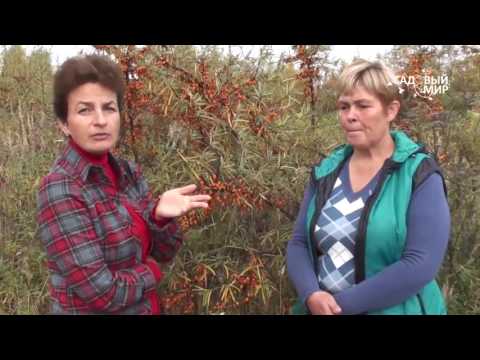

Watch this video on YouTube
Types and varieties of sea buckthorn with a description
There are only 2 types of sea buckthorn: willow sea buckthorn, naturally found in the mountainous regions of India, in Nepal, in the south of Xinjiang in China and in Bhutan, and sea buckthorn buckthorn - it grows throughout Europe.
Willow sea buckthorn is a tree that reaches a height of about 15 meters, while its trunk diameter is about 0.3 meters. The sharp, lanceolate leaves are about 8 centimeters long and up to 15 millimeters wide. Whitish leaves have brownish-red venation. The fruit is a round and yellow drupe, which reaches 0.7 cm in length.
Sea buckthorn buckthorn - a description of this species can be found at the beginning of this article. The varieties of this species are widely cultivated in the middle latitudes. Numerous varieties are divided into small-fruited and large-fruited, European and Siberian, thornless and thorny, late-ripening, mid-ripening and early-ripening. Siberian varieties cannot be grown in Europe, because mild winters with thaws are destructive for such a plant. In turn, European varieties are not adapted for cultivation in Siberia, because they are not winter hardy enough.
The most popular varieties of sea buckthorn will be described below.
Early maturing varieties
- Pearl oily... This ultra-early variety is productive and resistant to frost, but drought and excessive heat can harm the plant. Fragrant orange-colored fruits are egg-shaped.
- Krasnoplodnaya... This variety is distinguished by its yield, disease resistance and average frost resistance. The bush is spreading, vigorous, thorns are located on the surface of the entire stem. The ovate-conical fruits are fragrant and sour, light red in color, weighing about 1 gram.
- Inya... The variety is winter-hardy. A low, spreading bush has a not very lush crown. Sweet, fragrant fruits have a tubular-rounded shape and a red-orange color, weighing about 1 gram.
- Openwork... This thornless variety has a high yield and is resistant to heat, frost and drought. Sour fruits have an elongated cylindrical shape and orange-yellow color, weighing about 1 gram.
- Golden cascade... A thornless variety with an average yield is highly resistant to diseases and pests. Fragrant sweet-sour orange-colored fruits weigh about 1 gram.
Mid-season varieties
- Glow... The variety is distinguished by its yield and resistance to frost, diseases and pests. There are some small spines on the outside of the stems. The crimson-orange color of the fruit has a slightly sour taste.
- Beloved... This variety has a very high resistance to frost, diseases and pests. It can be a shrub with many thorns or a medium-sized tree. The fruits of a rich carrot color are quite large, they weigh more than 1 gram.
- Chanterelle... The variety has a high yield, winter hardiness and resistance to diseases and pests. Low bush, slightly spreading. Fruits of medium and large size, dark red color, have excellent taste.
- Botanical... This early-growing variety of industrial direction is resistant to frost, diseases and pests. The bush is moderately spiny. Fragrant large fruits of an oblong shape and saffron-orange color have a pleasant, slightly sour taste.
- Perchik... The variety is fruitful. A not very tall thorny bush has an umbrella-shaped crown. The sour fruits have an oval shape, orange color and pineapple scent.
In late-ripening varieties, the fruits only become sweeter after frost and do not fall off for a long time. Popular varieties:
- Elizabeth... This variety of Russian selection is one of the best varieties with high yields. Low bushes have a miniature crown. Large orange-golden fruits have a barrel-shaped shape and a fragrant, delicate pulp of a sweet-sour taste.
- Chuiskaya... This early-growing variety has a stable yield and high winter hardiness, but it is susceptible to fungal diseases. The orange-colored fruits are of medium size and sweet-sour taste.
- Zlata... The prickly variety has a stable yield. The color of large fruits is straw-egg, the shape is ovoid-round, and the taste is slightly sour.
- Herringbone... This scarce variety is resistant to frost and disease. The crown of the bush is narrow, conical, outwardly similar to a young spruce. Lemon green small fruits have a sour taste.
- Giant... A thornless variety with a stable yield and frost resistance. The large orange-colored and egg-shaped fruits have excellent taste.
Sea buckthorn properties: harm and benefit
Useful properties of sea buckthorn
Sea buckthorn berries, like its branches, as well as leaf plates, have healing properties. Sea buckthorn contains: oxalic, tartaric and malic organic acids, vitamins C, B1, B2, PP, K, E, carotene and carotenoids, flavonoids, manganese, boron and iron, tannins, phytoncides, oleic and linoleic fatty acids.
The berries contain beta-sitosterol, which has an anti-sclerotic effect, and also serotonin, which is very important for the normal functioning of the nervous system. A decoction made from the fruit is used for duodenal and stomach ulcers. Fresh fruit compresses help with burns, frostbite and abscesses. Also, experts advise these fruits to be used by men over 40 years old, because they contribute to an increase in potency.
Berries and foliage can cleanse the body of oxalic and uric acid. From the foliage of sea buckthorn, an infusion is prepared, which is used in the treatment of rheumatism, gout and diabetes mellitus. For disorders of the digestive tract, it is recommended to use a decoction prepared from the branches and foliage of this plant. With scurvy symptoms, it is recommended to prepare tea from dried sea buckthorn leaves.
However, the most valuable is sea buckthorn oil, which has a powerful bactericidal effect. It contains vitamin E, vitamin F, which regulates metabolic processes in the skin, sterols, trace elements and minerals silicon, silver, copper, vanadium, nickel, manganese and cobalt. This oil is used both internally and externally. It helps to increase the amount of protein in the liver, improve lipid metabolism, and stimulate regeneration processes in damaged tissues. In chronic laryngitis and pharyngitis, this oil is recommended to treat the mucous membrane of the oral cavity, and it is also used for inhalation. Also, this oil is advised to use dermatologists to enhance the growth of hair that has fallen out due to certain skin diseases.
Means that are based on sea buckthorn oil can many times improve the body's tolerance of anticancer drugs, and in some cases it helps to enhance their therapeutic effect. To improve the baby's immune system, it is necessary to mix milk with a few drops of sea buckthorn oil from the age of one month.
Contraindications
Sea buckthorn fruits contain a large amount of carotene, therefore, in a person with a weakened immune system, it can cause an allergic reaction.Also, the fruits have a high content of acids, so they cannot be eaten with liver diseases, cholecystitis, pancreatitis, inflammation of the duodenum, especially if the disease is in an exacerbation stage. Also, they should not be eaten by people with a tendency to diarrhea. Sea buckthorn increases the acidity of urine, so it is not advised to eat it for urolithiasis. And it should be abandoned by people with individual intolerance.

